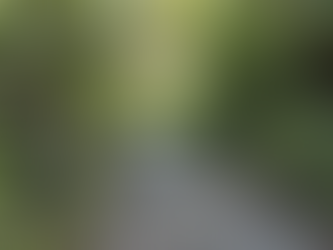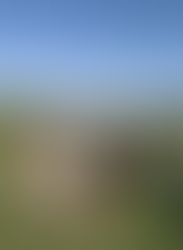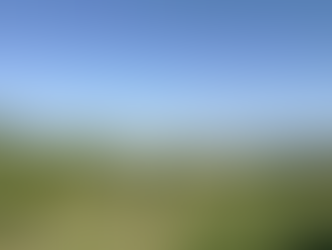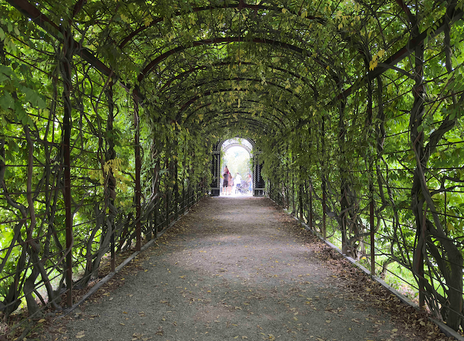Summer Adventure: Week 56, August 13-19, 2023
- Katie & Webster
- Aug 20, 2023
- 11 min read
It has been a busy week! We spent a few days in Cairo before flying to Vienna, and onto London.
On Sunday, we started our day at the Egyptian Museum in Cairo. The Egyptian Museum is the largest collection of artifacts from Ancient Egyptian times. We felt like it was important to understand the history behind the pyramids and unique artifacts we were seeing.
The Egyptian Museum is the oldest archaeological museum in the Middle East, and houses the largest collection of Pharaonic antiquities in the world. The museum displays an extensive collection spanning from the Predynastic Period to the Greco-Roman Era. The architect of the building was selected through an international competition in 1895, which was the first of its kind, and was won by the French architect, Marcel Dourgnon. The museum was inaugurated in 1902 by Khedive Abbas Helmy II, and has become a historic landmark in downtown Cairo, and home to some of the world’s most magnificent ancient masterpieces. Among the museum’s unrivaled collection are the complete burials of Yuya and Thuya, Psusennes I and the treasures of Tanis, and the Narmer Palette commemorating the unification of Upper and Lower Egypt under one king, which is also among the museum’s invaluable artifacts. The museum also houses the splendid statues of the great kings Khufu, Khafre, and Menkaure, the builders of the pyramids at the Giza plateau. An extensive collection of papyri, sarcophagi and jewelry, among other objects, completes this uniquely expansive museum.
While the museum showcases a lot of beautiful history, we were disappointed with the execution. The museum seemed like someone had thrown everything in a big building, in no specific order; somewhat like an old garage filled with random things. There were no descriptions with any of the items, the displays were dusty, the floors were cracked, there was no air conditioning, no fans, and the bathroom cost money inside even though we paid $20 each for a ticket. Because of the poor displays, we did not spend an adequate amount of time exploring everything there was to offer - we had to Google items of interest to understand what they were, and we were so hot we drank 5L of water during our 3 hour visit.
It is promising to hear that the New Egyptian Museum is set to open in 2024. All of the items will be moved to a new facility that is hopefully better managed and in a condition that encourages learning.
Afterwards, we headed to a Starbucks on the Nile River for a cold coffee. The Starbucks is on a boat that is stationary on the Nile. It was a cool way to experience the centre of the city (with air conditioning!).
Later in the afternoon, we met up with Magy for a local Cairo Food Tour. We met Magy at a local bus station before heading on local public transport to her neighbourhood. We spent more than five hours walking through markets, in little shops, restaurants and food stands. We were treated to more than 20 dishes, and 5 drinks, all which are enjoyed by locals on a daily basis. We started our adventure with a traditional breakfast, then a lunch, a bakery, a dinner spot, street food, and finally dessert. By the end of the tour we had walked 10KM, tried countless dishes, and got an authentic experience. We love when we go on a tour and are the only tourists around - this is what we got with Magy on Sunday.
On Monday, we had breakfast with the pyramids! We had an iced coffee with a fantastic view.
Then, we spent the day enjoying the sunshine, the pool, and the views at our hotel. It was a hot day, but in the shade, it was very comfortable.
In the afternoon, we had lunch overlooking the Great Pyramids of Giza. The hotel spoiled us with a portable air conditioning unit beside our table.
In the evening we flew from Cairo to Athens, for a long layover before arriving in Vienna. Although we didn’t book an exit row, we were excited to get a seat with lots of leg room!
On Tuesday morning, we arrived in Vienna bright and early. We met up with some friends, Solange, Mike and Bianca, who went to Queen’s University in Kingston, Ontario when we were there. It was nice to see some familiar faces! Our first stop was Schwieserhaus, a local biergarten that opened in 1766. We had schnitzel, sausage, beer, and pretzels! Then, we went to see where Solange went to school for her double degree. We walked through campus and looked into beautiful, new, buildings.
In the afternoon, we hiked up to Feuerwehr Wagner at Nussberg, a winery on top of a beautiful lookout point overlooking Kahlenberg, the Leopoldsberg and the transdanubian side of Vienna, as well as the Danube. It was a beautiful day, with great wine!
In the evening, we rented a boat and floated down the river in the city centre. The boat was a raft, with an electric engine. On the raft we had a couch, a table, and a palm tree. It was the perfect temperature for being outside as we watched the sunset from the water.
On Wednesday morning, we started our big day touring Vienna with breakfast at Palmenhaus, a former royal greenhouse overlooking Hofburg palace gardens.
The first iteration of the greenhouse was built in 1822, overlooking the expansive Hofburg palace gardens. Nearly 80 years later, Austrian architect Friedrich Ohmann built the extravagant, steel-and-glass Jugendstil structure that still stands today. After a multimillion dollar renovation in 1998, the building now boasts more than 22,000 square feet of magnificent flora, food, and even a bunch of butterflies. (You’ll find them in the Schmetterlingshaus, or “House of Butterflies.”) You’ll find all sorts of delicious items to munch on, from freshly-baked pastries to fish dishes to decadent desserts. Though the lunch and dinner menus change daily, you can always expect to find the classic Viennese morning meal of handmade rolls, jam, and blossom honey on the breakfast menu. But, no matter what you order, the best part of your meal will likely be feasting your eyes on the greenery and glass fit for an emperor, or at least his plants.
Then, we did our own walking tour across the city. We found the biggest tourist spots on TripAdvisor, and made our own tour. At each stop we would sit down, read about the location, and then wander around/take pictures.
We started at Helmut Zilk Platz, a historical city square with sculptures addressing the impact of war & fascism on Austrian history. It was a cool place to wander around because all the buildings around it were old and so well maintained. In the area was a part of Homburg Imperial Palace - the largest castle/palace complex in the world dating back to the 13th century. The complex is so big, we didn’t even know we were walking through it. Today, there are restaurants, cafes, stores, monuments, and offices, in all the unique spaces.
Our second stop was St.Stephen’s Cathedral, a beautiful cathedral in the city centre.
St. Stephen's Cathedral is the mother church of the Roman Catholic Archdiocese of Vienna and the seat of the Archbishop of Vienna. The current Romanesque and Gothic form of the cathedral, seen today in the Stephansplatz, was largely initiated by Duke Rudolf IV (1339–1365). Standing at 136 meters (446 ft) tall, St. Stephen's Cathedral's massive south tower is its highest point and a dominant feature of the Vienna skyline. Its construction lasted 65 years, from 1368 to 1433. During the Siege of Vienna in 1529 and again during the Battle of Vienna in 1683, it served as the main observation and command post for the defence of the walled city, and it even contains an apartment for the watchmen who, until 1955, manned the tower at night and rang the bells if a fire was spotted in the city. The cathedral stands on the ruins of two earlier churches, the first a parish church consecrated in 1147. The most important religious building in Vienna, St. Stephen's Cathedral has borne witness to many important events in Habsburg and Austrian history and has, with its multi-coloured tile roof, become one of the city's most recognizable symbols.
Our third stop was Belvedere Palace where we wandered through the gardens, had a coffee on the lawns, and enjoyed the sunshine.
The unique, overall complex, with its two palaces, the Upper and Lower Belvedere, and their extensive gardens, is one of the most stunning Baroque architectural ensembles in the world. In the 18th century, the Austrian general Prince Eugene of Savoy commissioned the renowned Baroque architect Johann Lukas von Hildebrandt to build a summer residence. After the death of Prince Eugene, Empress Maria Theresa acquired the entire complex and transformed the Upper Belvedere into an exhibition venue for the imperial collections – making it one of the first public museums in the world. The Marble Hall was the venue for important historical events and now offers an unparalleled view of Vienna. The Lower Belvedere, formerly the residence of Prince Eugene, is home to illustrious exhibitions.
For lunch, we stopped at Naschmarket where we wandered between the stalls looking at fresh produce, meat, cheese, baked goods, and souvenirs. It was a tourist area but really neat to have a variety of things in one place.
Welcome to the Naschmarkt, which in Austria and Vienna is by far the most famous and the most luxurious food and produce market. Nowhere else in the city, nor probably in anywhere else in Austria, will you find such a wide range of things to see, to eat, to drink and to enjoy as at the Naschmarkt. Since the 16th century people in Austria has come to the Naschmarkt get to enjoy the many different products which would be brought here by vendors of the city farmers from the outside of the city, and those that came from overseas by boats and ships from different parts of the world that were once connected to the Austrian empire.
Today the market serves a wide variety of different purposes, serving not only the local residents of the area who come here to do their daily food shopping, but also visitors from around the globe who come to enjoy the main sights and sounds of the market.
We finished our self-guided tour of the city with a visit to Schönbrunn Palace.
Schönbrunn Palace was the main summer residence of the Habsburg rulers, located in Hietzing, Vienna. The 1,441-room Baroque palace is one of the most important architectural, cultural, and historic monuments in the country. The history of the palace and its vast gardens spans over 300 years, reflecting the changing tastes, interests, and aspirations of successive Habsburg monarchs. It has been a major tourist attraction since the mid-1950s. UNESCO catalogued Schönbrunn Palace on the World Heritage List in 1996, together with its gardens, as a remarkable Baroque ensemble and example of synthesis of the arts.
That evening, we went to another biergarten for some schnitzel, beer, and potato salad! Yum!
On Thursday, we had a busy day in Budapest! We left Vienna at 4:30AM on a 3-hour bus to Budapest, Hungary.
Our busy day started with a funicular ride up the hills of the Danube to Buda Castle. We rode the funicular, which has been running for more than 100 years, up to a view point over the city. When we arrived at the top we saw the changing of the guard outside the President’s office before walking around the castle grounds.
Buda Castle is the historical castle and palace complex of the Hungarian Kings in Budapest. It was first completed in 1265, although the massive Baroque palace today occupying most of the site was built between 1749 and 1769. The castle now houses the Hungarian National Gallery and the Budapest Historical Museum. Buda Castle sits on the southern tip of Castle Hill, surrounded by the touristic area known as Várnegyed (Castle Quarter), which is famous for its Medieval, Baroque, and Neoclassical houses, churches, public buildings, and monuments. The hill is linked to Clark Ádám Square and the Széchenyi Chain Bridge by the Castle Hill Funicular. The castle is a part of the Budapest World Heritage Site, declared in 1987.
Then, we walked along the riverbanks to a great vantage point of the Hungarian Parliament buildings.
Budapest was united from three cities in 1873, namely Buda, Óbuda, and Pest. Seven years later the Diet resolved to establish a new, representative parliament building, expressing the sovereignty of the nation. About 100,000 people were involved in its construction, during which 40 million bricks, half a million precious stones and 40 kg (88 lb) of gold were used. The Parliament Building is built in the Gothic Revival style; it has a symmetrical façade and a central dome. The dome is Renaissance Revival architecture. The parliament is also largely symmetrical from the inside, with two identical parliament halls on the opposing sides of the building. One of the two halls is still in use today for sessions of the Hungarian National Assembly, the other for ceremonies, conferences, and guided tours.
Our third stop of the day was to the Shoes on the Danube Bank Monument.
Installed along the bank of the Danube River in Budapest, the monument consists of 60 pairs of shoes, true to life in size and detail, sculpted out of iron. They are a memorial and a monument to the Hungarian Jews who, in the winter of 1944-1945, were shot on the banks of the Danube River by the members of the Arrow Cross Party, who subscribed to Nazi ideologies.
It was quite chilling to be in the same spot where this tragic event occurred, but an important reminder of the history in the city.
For lunch, we made our way to the Great Market Hall where we walked through stalls of food, souvenirs, leather goods, and fresh produce. We found some yummy Hungarian food for lunch and had a rest after a busy morning.
In the afternoon, we went on a sightseeing river cruise down the Danube. Our ship set sail from the center of Budapest, from the Elisabeth Bridge, it proceeds towards the Margaret Bridge, where it turned back to the direction of the Rákóczi Bridge. During the cruise we saw: Inner City Parish Church, Chain Bridge, Bronze Shoes Memorial, Parliament, Margaret Island, Fisherman’s Bastion, Buda Castle, Castle Garden Bazaar, Elizabeth Bridge, Gellért Hill, Statue of Liberty, National Theatre, and the Central Market Hall.
That evening, we finished our time in Budapest with a visit to a ruin bar. Ruin bars are unusual drinking spots located inside neglected pre-war buildings of the old Jewish Quarter, furnished with clearance sales furniture to build a cool atmosphere. We went to Szimpla Kart which was a mix of indoor, outdoor seating areas in an old building. It was packed with locals and tourists! Afterwards, we boarded the bus back to Vienna.
On Friday, we had a slow start to the day with breakfast at Ulrich, a local breakfast spot near our AirBnB. Then, we saw Bianca off to the airport.
Later in the afternoon, we made our way to St.Stephen’s Cathedral to walk around the bustling city centre. We had an iconic piece of apple strudel from Cafe Central. Cafe Central opened in 1876 becoming a key meeting point for Viennese people including Sigmund Freud and Leon Trotsky.
Then, we walked around the city centre coming across the parliament buildings, city hall, and St.Charles’s Church in Karlzplatz. It was a great way to spend the afternoon!
On Saturday morning we flew bright and early to London - one of our favourite places in the world! We had a quick connection in Frankfurt before landing at Gatwick airport. We checked into our hotel, dropped our bags, and got out exploring as soon as we could!
Our first stop was Greggs. Greggs sausage rolls taste exactly like we remembered them!
Then, we made our way to the Tower of London. The Tower of London is a historic castle along the river Thames and beside tower bridge. It was fun to revisit the spot of one of our favourite London memories, skating in the castle moat in 2018.
Afterwards we walked across the London Bridge to Borough Market for some lunch! Borough Market opened in 1756, and is the oldest food market in London. Webster and I both got our favourites. Webster got fish and chips and I got a pistachio donut.
After Borough market we met up with Emily, a friend from Laurier. Together we walked around the river and explored the area around our hotel. Later that night, Emily joined us for dinner at Franco Manca. Franco Manca is a pizza restaurant that serves authentic Italian pizza. This was our absolute favourite restaurant when we lived in London, so it was exciting to see the menu hadn’t changed.
After dinner we went to see The Choir of Man. The Choir of Man is a musical, set in a traditional British pub. The show features a working on-stage bar from which pints of beer are poured for the audience during the performance. It was a great show with pop and rock songs that tell the story of the pub regulars.
After the show, we found a traditional pub to have a drink in. It was an authentic way to finish off our first day in London.
This week we have a few more days to explore in London before flying home to Toronto! Stay tuned!

































































































































































































































































































































































































































































































































































Comments